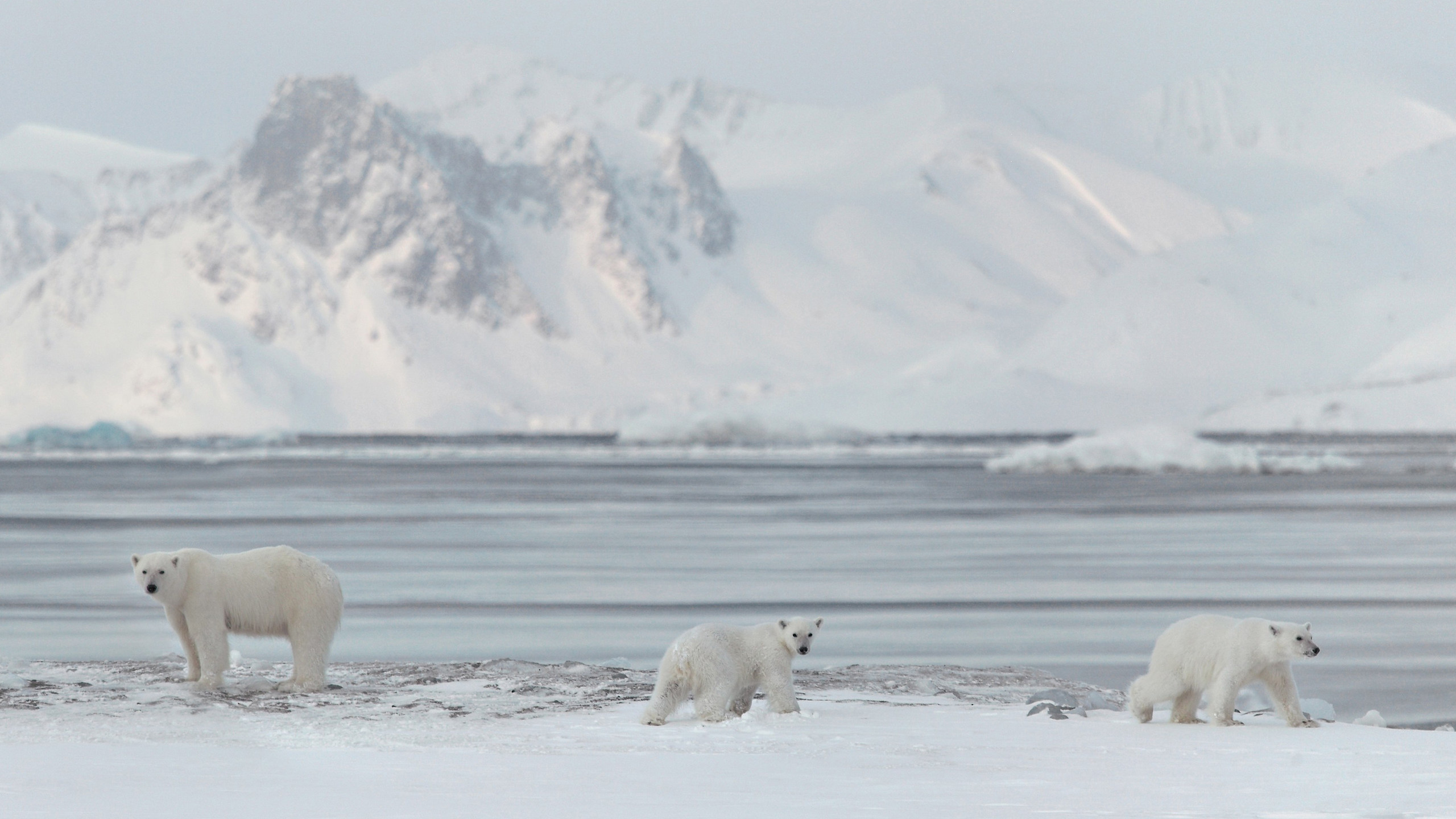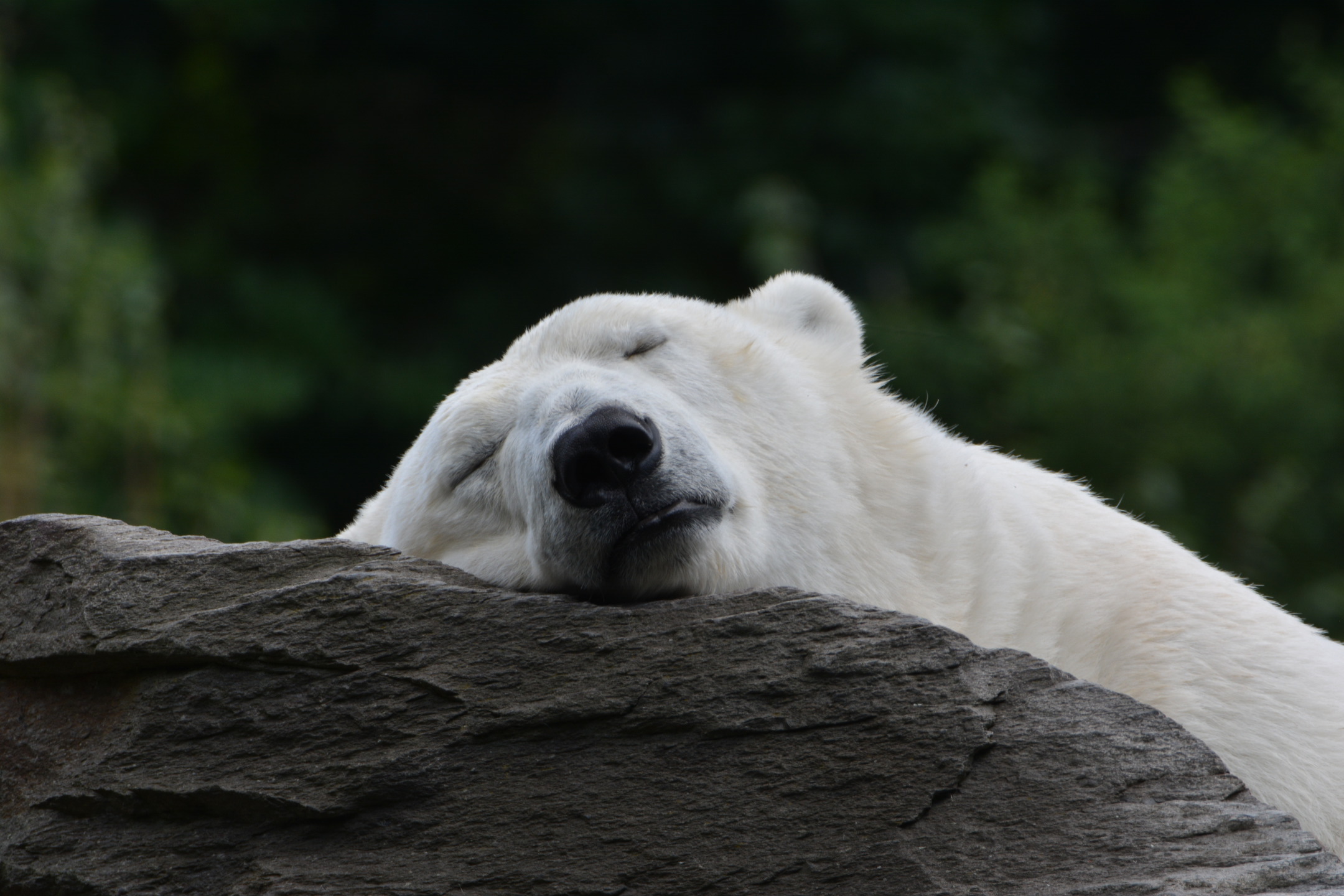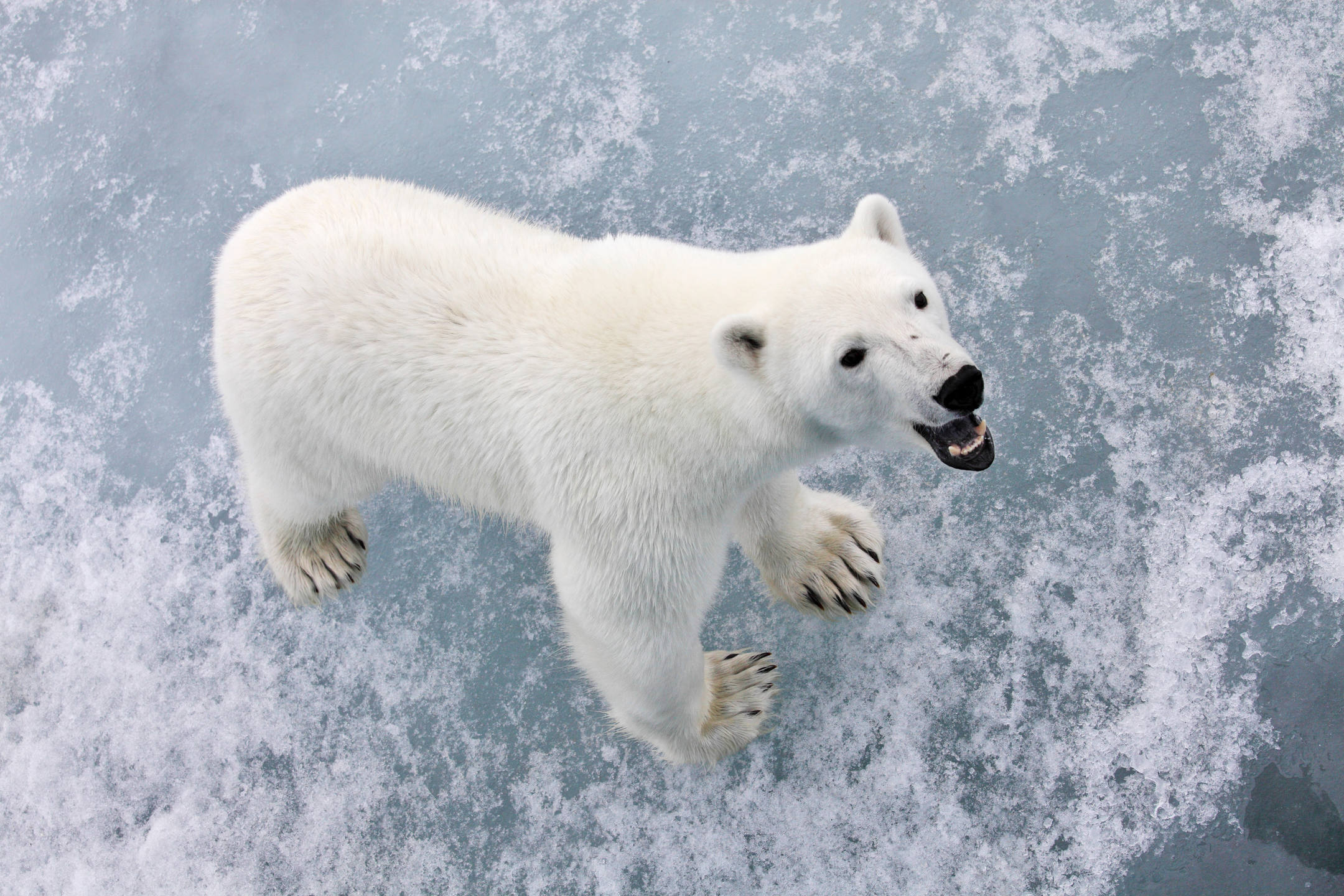Polar bears are one of the most majestic animals of the Arctic.
With thick fur and powerful bodies that allow them to adapt to the harsh climate in the north.
Install MyStart Theme for Google Chrome
Canada holds roughly 60% of the total polar bear population and provides opportunities for guests to come and watch these animals in their natural habitat.
Let us explore some cool facts about polar bears.
1. Polar Bears Are Not Actually White
Believe it or not, polar bears have transparent hair that reflects natural light giving the appearance of white fur.
They also have black skin, which, coupled with their thick coating of fur, acts as insulation to keep them warm in the cold climate.
 2. Polar Bears Can Overheat
2. Polar Bears Can Overheat
Although polar bears have adapted well to their habitat, they are at risk of overheating. The harsh climate of the Arctic can drop below 50 degrees Celsius in the winter, and up to 20 degrees Celsius in the summer, which means polar bears have to ensure they do not overexert themselves and risk overheating.
3. Polar Bears Clean Themselves Using Snow
Polar bears engage in self-grooming, which they manage by rolling around in the snow and rubbing the dirt off. By ensuring cleanliness, their fur maintains its insulating properties, which means that after hunting for food, they often take a dip in the ocean and roll around in the snow to bring their body temperature down.
4. Polar Bears Are Fast on Land and Water
Polar bears can reach maximum speeds of 40 kilometers per hour on land, which can overexert them quite a bit, so they only use it for hunting prey.
They are also pretty fast swimmers in the ocean and can easily reach speeds of around 10 kilometers per hour. Their front paws are used to propel them deeper and faster into the water, and their back legs allow them to steer effectively. Polar bears are also sometimes called sea bears.
5. Polar Bears Are The Largest Land Carnivore
Male polar bears can easily weigh up to 770 kilograms and use their massive size to overcome prey. When food is scarce, you might find polar bears to be a fraction of their size, which is why they hibernate in winters after going on a feeding frenzy for months before.
6. Sinking Ice Caps Are Endangering Polar Bears’ Lives
Climate change is a significant factor contributing to the melting of the ice caps, which results in ice melting a few months earlier than expected. Sea-ice also starts to form later because of the temperature change, meaning polar bears have a smaller surface to hunt prey and have become limited by the lower time frame.
Seals are one of the main prey that polar bears hunt and smaller ice surfaces prevent them from effectively capturing them.
 7. Polar Bears Have a Wicked Sense of Smell
7. Polar Bears Have a Wicked Sense of Smell
These arctic bears have no problem sniffing out prey from up to 1 kilometer away, and their noses even manage to find seals hiding up to 1 meter below the snow’s surface.
8. Polar Bears Have a Lifespan of up to 30 Years
Polar bears have been a source of intrigue for many animal lovers, who have noticed that polar bears, on average, live up to 18 years of age. Access to food supplies is a factor that contributes to this dwindling number, as healthier polar bears tend to live longer.
 9. Female Polar Bears Produce up to 5 Litters of Cubs in Her Life
9. Female Polar Bears Produce up to 5 Litters of Cubs in Her Life
Polar bears are vulnerable as their population continues to die down, with climate change affecting available food sources. Many polar bears struggle to survive and are known to starve to death. With such a low litter count for females, it is difficult for polar bears to multiply, and two-thirds of the total population are related.
Female polar bears give birth in snow dens, usually in the winters, which means the bear cubs are safe from below-freezing temperatures. The cubs are no bigger than 30 centimeters at birth and weigh only about half a kilogram, the same size as a guinea pig.
10. Polar Bears’ Diet is Primarily Fat
Fat from seals and other animals is high in Calories, and polar bears feast on as much as they can devour, with their stomachs having a holding capacity of up to 20% of their body weight.
The average full-sized polar bear can easily consume 2 kilograms of fat per day, so they prefer seals because of the high blubber content. The high-fat meals add to their layer of fat, which acts as insulation for winters and helps them keep warm.
Final Thoughts
There are too many facts about polar bears that make them fascinating creatures for animal enthusiasts, and they are also widely regarded as adorable giants of the Arctic.
Are you a polar bears lover? Get stunning images of polar bears every time you open a new tab.
Install MyStart Theme for Google Chrome











